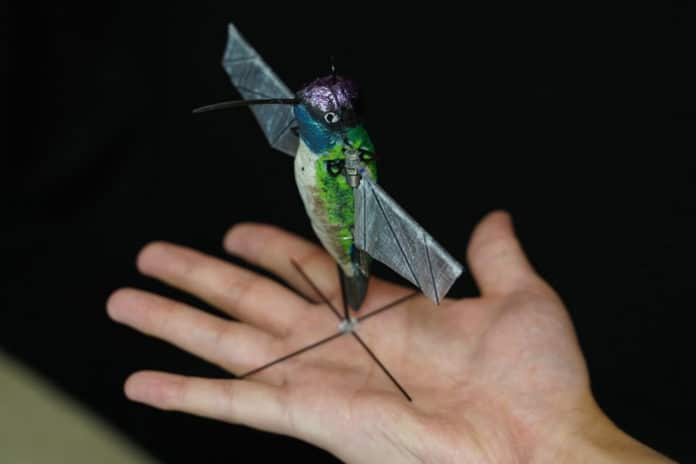Birds have always been inspirational drones for many years. While one of nature’s most incredible creations, Hummingbirds has something special. They can flap their wings about 80 times per second and fly right, left, up, down, backward, and even upside down. Its ability to hover and make sharp turns could teach drones a few things.
Using machine learning, the researchers at Purdue University studied how these birds fly to replicate their abilities in drones.
Then, the team built a hummingbird-inspired robot that behaves like hummingbirds, trained by machine learning algorithms based on various techniques the bird uses naturally every day. After learning from a simulation, the robot “knows” how to move around independently like a hummingbird, such as discerning when to perform an escape maneuver.
Drones cannot be shrunk to very small sizes, as they can’t generate enough lift to support their weight. But hummingbirds don’t use conventional aerodynamics – and their wings are resilient. And the drone made by the researcher team is nearly close to the size of the bird.
Hummingbird Robot Features
The hummingbird robot is made of carbon fiber and membranes cut with lasers, and its body is 3D-printed. It weighs only 12 grams (0.4 ounces) and can lift more than twice its weight. The team has also created an insect-sized robot that weighed just 1 gram.
It can fly like a hummingbird and pull off some of the most insane aerial stunts, like hovering and turning 180 degrees in 0.2 seconds flat.
These tiny drone doesn’t have any camera to see the surrounding, but still, through an electrical sense of touch and AI algorithms, they can track their movements around objects. It senses its environment by touching surfaces and learns how to move efficiently.
While these drones will not be the fastest and farthest fliers, their improved maneuverability and small size make them move through spaces that other robots can’t fit into. And, due to its small size and quiet operation, it can be well suited for secret use and search and rescue operations.
“The robot can essentially create a map without seeing its surroundings,” Xinyan Deng, an associate professor of mechanical engineering at Purdue University, explained in a statement. “This could be helpful in a situation when the robot might be searching for victims in a dark place — and it means one less sensor to add when we do give the robot the ability to see.”
However, before more sensors can be added to the robot, the team says its lifting power needs a boost. Cameras, GPS, and other sensors could be useful in future versions, and batteries would allow it to fly free – in its current form, the flying robot has to remain tethered to an energy source.
Journal Reference
- Tu, Z., Fei, F., Zhang, J., & Deng, X. (2019). Acting Is Seeing: Navigating Tight Space Using Flapping Wings. ArXiv. /abs/1902.08688

